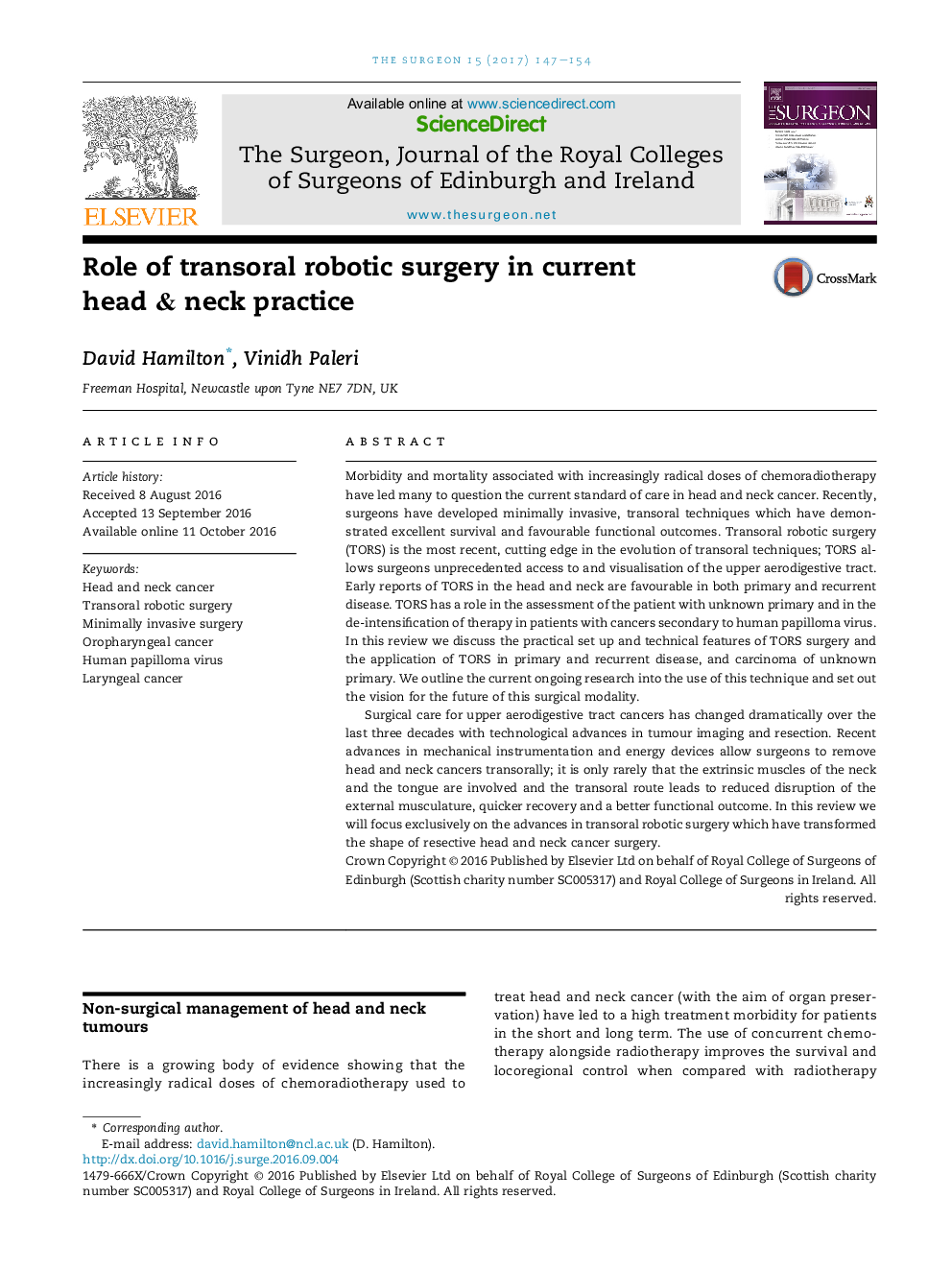| Article ID | Journal | Published Year | Pages | File Type |
|---|---|---|---|---|
| 5644082 | The Surgeon | 2017 | 8 Pages |
Morbidity and mortality associated with increasingly radical doses of chemoradiotherapy have led many to question the current standard of care in head and neck cancer. Recently, surgeons have developed minimally invasive, transoral techniques which have demonstrated excellent survival and favourable functional outcomes. Transoral robotic surgery (TORS) is the most recent, cutting edge in the evolution of transoral techniques; TORS allows surgeons unprecedented access to and visualisation of the upper aerodigestive tract. Early reports of TORS in the head and neck are favourable in both primary and recurrent disease. TORS has a role in the assessment of the patient with unknown primary and in the de-intensification of therapy in patients with cancers secondary to human papilloma virus. In this review we discuss the practical set up and technical features of TORS surgery and the application of TORS in primary and recurrent disease, and carcinoma of unknown primary. We outline the current ongoing research into the use of this technique and set out the vision for the future of this surgical modality.Surgical care for upper aerodigestive tract cancers has changed dramatically over the last three decades with technological advances in tumour imaging and resection. Recent advances in mechanical instrumentation and energy devices allow surgeons to remove head and neck cancers transorally; it is only rarely that the extrinsic muscles of the neck and the tongue are involved and the transoral route leads to reduced disruption of the external musculature, quicker recovery and a better functional outcome. In this review we will focus exclusively on the advances in transoral robotic surgery which have transformed the shape of resective head and neck cancer surgery.
